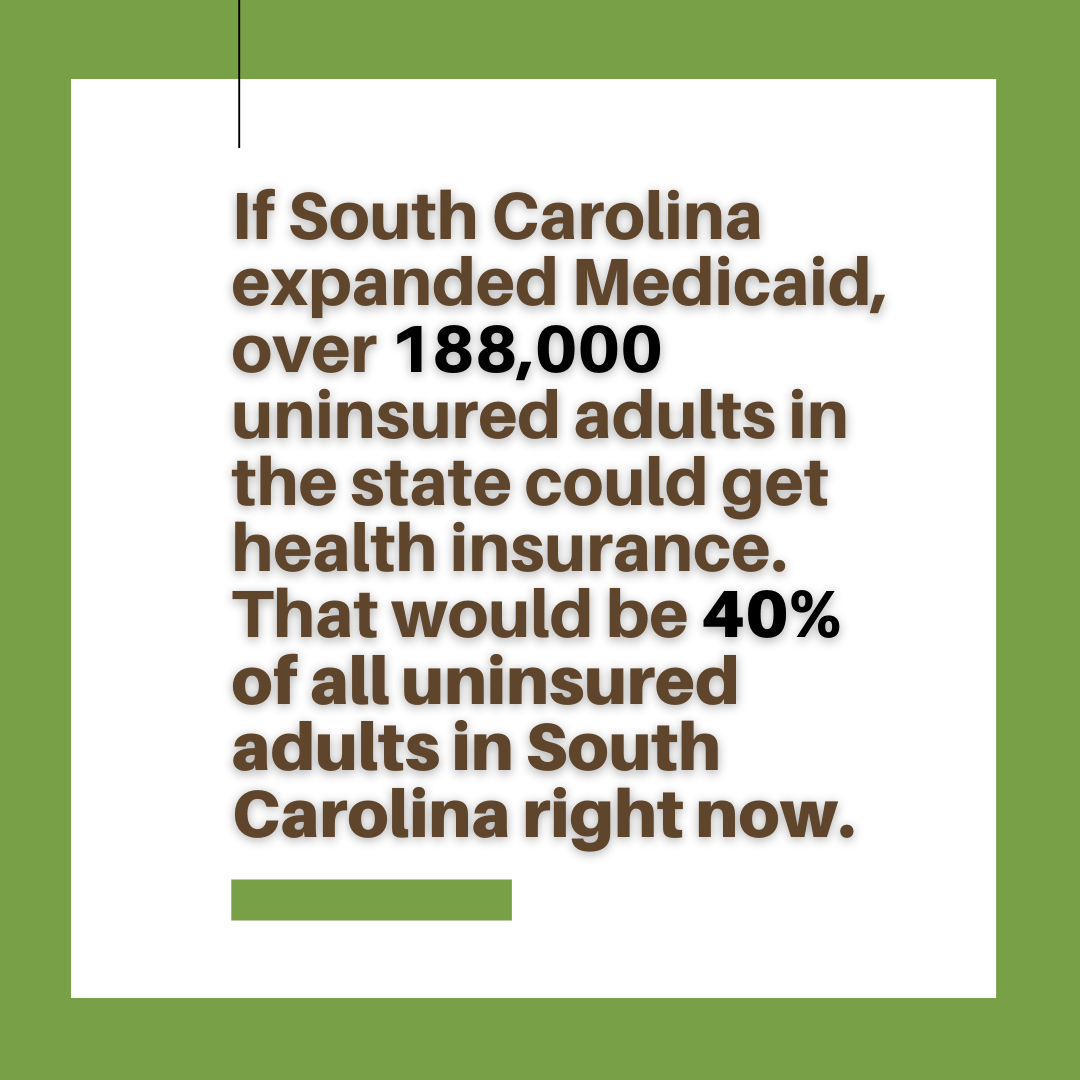Posted in Children, Healthcare, Housing, Uncategorized
The American Rescue Plan Act of 2021 (ARP) was signed into law in early March of this year. The bill helped extend popular COVID relief benefits through June. It also led to the expansion of many programs and benefits for low-income communities in the United States. Some of the benefits include:
- Making Child Tax Credit available to most children in the US
- Providing rent and utility help to struggling households due to the pandemic
- Funding COVID vaccination distribution
Medicaid expansion was also an important part of the ARP. The Act provides additional money to states that enroll in the expanded program. South Carolina is currently one of 12 states that have chosen not to be part of the expansion. Other states include Alabama, Florida, Georgia, Kansas, Mississippi, North Carolina, South Dakota, Tennessee, Texas, Wisconsin, and Wyoming.

Medicaid expansion would help provide financial support to low-income communities for medical bills. It would also provide better access to credit for home and auto loans. Broadening Medicaid would also bring financial support to hospitals, especially those in rural communities.
Georgetown University’s Profile South Carolina’s Low-Wage, Uninsured Workers
This week, Georgetown University’s Center for Children and Families released a fact sheet to help understand who would benefit most from Medicaid Expansion in South Carolina. They found that people working food service and retail made up the largest group of uninsured workers. Restaurants were found to be the biggest employer of uninsured workers in the state which includes jobs like cooks and waiting tables. The most common jobs for uninsured people were essential workers during the pandemic: cashiers, construction laborers, and cooks.
“Hospitality and retail are the top two industry sectors in South Carolina employing low-wage uninsured workers — accounting for more than one-third of those working without insurance,” says Joan Alker, Executive Director of the Georgetown University Center for Children and Families. “This data is pre-pandemic, so the situation is likely worse for them now. Both sectors employ more women than men.”
The fact sheet found that most uninsured workers were either White or Black/African American. People who identified as White were found to be the most uninsured in retail, followed by administrative work. Most people who identified as Black/African American and were uninsured worked in manufacturing or health care and social assistance. The study found that more women were uninsured compared to men. This was especially true for women working in the retail and food services. More men were found working uninsured in manufacturing.

Coastal counties Horry and Jasper were identified as the two counties with the most uninsured workers in the state. Most of the counties on the list were from the Pee Dee and Lowcountry portion of South Carolina. These counties include Beaufort, Clarendon Dillon, Georgetown, and Marion. This was not just a coastal concern though. There were also high rates of uninsured workers in counties from the central and western parts of the state. These counties included Oconee and Union in the Upstate along with Saluda and Sumter counties in the Midlands region.
“Another interesting finding from the South Carolina data is that the counties with high levels of uninsured workers are a real mix of rural and metropolitan,” Alker explains. “In most states we have looked at, rural counties have heavily dominated the list.”
“It is easy to think that access to health care is only an issue in rural communities,” says Sue Berkowitz, Director of the South Carolina Appleseed Legal Justice Center. “The data here shows it is a major problem in metropolitan counties like Horry which is driven by service industry work related to tourism. We have many people throughout the state, both in rural towns and major cities that would benefit from having more access to health care.”
The data found that South Carolina has a higher rate of uninsured workers per county than the average United States county.
Read the full fact sheet by Georgetown University’s Center for Children and families here.
Thanks to the Georgetown University’s Center for Children and Families for providing the fact sheet on South Carolina’s low-wage uninsured workers.

